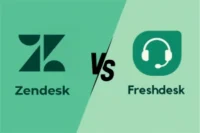TLS vs SSL: Which Encryption Protocol is Safer & Faster?
Published: 6 Mar 2025
TLS (Transport Layer Security) and SSL (Secure Sockets Layer) are protocols used to encrypt and secure online communication. Both ensure data privacy and protect sensitive information from cyber threats. However, TLS is the modern and more secure version of SSL, offering stronger encryption and improved security features.

Many websites and applications have moved from SSL to TLS due to its enhanced protection. Understanding the differences between TLS and SSL helps in choosing the right protocol for secure online communication.
Quick Comparison Table: TLS vs SSL
Here’s a quick comparison table of TLS vs SSL to choose best security protection:
| Feature | SSL (Secure Sockets Layer) | TLS (Transport Layer Security) |
| Security Level | Less secure | More secure with stronger encryption |
| Encryption Algorithms | Uses older, weaker algorithms | Supports modern, stronger encryption |
| Performance | Slower due to outdated methods | Faster and more efficient |
| Compatibility | Works with older systems | Designed for modern web applications |
| Usage | No longer widely used | Standard for secure internet connections |
| Vulnerabilities | Susceptible to attacks like POODLE | Improved security with protection against known attacks |
| Support | Deprecated and no longer updated | Actively maintained and updated |
Differences Between TLS and SSL in Detail
TLS (Transport Layer Security) and SSL (Secure Sockets Layer) are cryptographic protocols that secure internet communication. TLS is an advanced and more secure version of SSL, offering better encryption and improved security features. Below are the detailed differences between TLS and SSL.
1. Security and Encryption
TLS:
- Uses stronger encryption algorithms for better security.
- Provides more secure cipher suites to prevent cyber threats.
- Uses forward secrecy to protect past communications if keys are compromised.
- Supports authenticated encryption, making attacks harder.
- Eliminates vulnerabilities present in SSL.
SSL:
- Uses weaker encryption methods that are now outdated.
- Lacks forward secrecy, making intercepted data vulnerable.
- Supports older cipher suites that are prone to cyberattacks.
- More susceptible to security breaches like POODLE and BEAST attacks.
- No longer considered safe for modern internet security.
2. Performance and Speed
TLS:
- Optimized for faster connections and reduced latency.
- Uses an improved handshake process for quicker authentication.
- Supports session resumption, reducing reconnection time.
- Uses efficient encryption algorithms that enhance performance.
- Works better for cloud-based and real-time applications.
SSL:
- Slower due to inefficient encryption techniques.
- Requires a full handshake every time a connection is made.
- Does not support session resumption, causing delays.
- High latency in establishing secure connections.
- Not optimized for modern web applications.
3. Handshake Process
TLS:
- Uses a more secure handshake process with better authentication.
- Supports Perfect Forward Secrecy (PFS) for extra security.
- Uses digital signatures to verify authenticity.
- Reduces handshake time with optimized key exchange methods.
- More resistant to interception and attacks.
SSL:
- Uses a less efficient handshake process.
- Does not support PFS, making it less secure.
- Uses older key exchange methods that are vulnerable.
- Takes more time to establish a connection.
- More prone to man-in-the-middle attacks.
4. Protocol Versions
TLS:
- TLS 1.0 and 1.1 are outdated but are more secure than SSL.
- TLS 1.2 is widely used and provides strong encryption.
- TLS 1.3 is the most secure and fastest version.
- TLS constantly evolves to fix vulnerabilities.
- Recommended by security experts for modern applications.
SSL:
- SSL 2.0 had major security flaws and was deprecated.
- SSL 3.0 was an improvement but still vulnerable.
- SSL is no longer supported by most modern browsers.
- Hasn’t received updates since being replaced by TLS.
- Not recommended for use in any secure environment.
5. Cipher Suites
TLS:
- Supports modern cipher suites with better security.
- Uses AEAD (Authenticated Encryption with Associated Data) for protection.
- Eliminates weak ciphers like RC4.
- Implements stronger hashing algorithms like SHA-256.
- Provides improved security for data in transit.
SSL:
- Uses older cipher suites that are no longer secure.
- Relies on weak hashing algorithms, increasing vulnerability.
- Does not support AEAD encryption.
- More prone to attacks that exploit weak ciphers.
- Phased out due to security weaknesses.
6. Key Exchange Methods
TLS:
- Uses forward secrecy to protect previous sessions.
- Supports Elliptic Curve Diffie-Hellman (ECDHE) for better security.
- Prevents attackers from decrypting past communications.
- Provides stronger authentication methods.
- Resistant to known cryptographic attacks.
SSL:
- Does not support forward secrecy.
- Uses weaker key exchange algorithms.
- Vulnerable to attacks that decrypt stored data.
- Relies on outdated cryptographic techniques.
- No longer considered secure for key exchanges.
7. Certificate Compatibility
TLS:
- Uses TLS certificates for authentication.
- Widely supported by modern browsers and servers.
- Helps secure websites with HTTPS encryption.
- Recommended by security experts for data protection.
- Provides better verification of a site’s legitimacy.
SSL:
- SSL certificates are outdated but still commonly referred to.
- Many old SSL certificates have been upgraded to TLS.
- Not recommended for secure website authentication.
- Lacks advanced validation features available in TLS.
- No longer trusted by major certificate authorities.
8. Vulnerabilities
TLS:
- Fixes known SSL vulnerabilities like POODLE and BEAST.
- Implements stronger encryption to prevent attacks.
- More resistant to man-in-the-middle attacks.
- Regularly updated to patch security flaws.
- Offers improved security against modern cyber threats.
SSL:
- Prone to major security exploits.
- Vulnerable to POODLE, BEAST, and Heartbleed attacks.
- Outdated encryption makes it easier to crack.
- No longer updated or maintained.
- Considered unsafe for any secure communication.
9. Application in HTTPS
TLS:
- Powers modern HTTPS encryption.
- Ensures secure communication over the web.
- Used in online banking, e-commerce, and secure transactions.
- Protects sensitive user data from cyber threats.
- Recommended for all websites using HTTPS.
SSL:
- Was initially used for HTTPS encryption.
- Replaced by TLS due to security concerns.
- Not used in modern web security.
- No longer supported by most browsers.
- Unsafe for securing online communications.
10. Support and Usage
TLS:
- Supported by modern browsers and operating systems.
- Used in VPNs, VoIP, and secure email services.
- Constantly updated for improved security.
- Preferred for encrypting internet traffic.
- Essential for securing sensitive data.
SSL:
- No longer supported by major platforms.
- Deprecated due to security risks.
- Not recommended for any secure communication.
- Phased out in favor of TLS.
- Lacks modern security enhancements.
Which One is Better?
TLS is the clear winner over SSL due to its stronger encryption, better performance, and improved security features. SSL is outdated and no longer considered safe for use. Websites, businesses, and applications should use TLS, especially the latest version (TLS 1.3), to ensure data security and protection.
Conclusion
TLS is the modern and secure successor to SSL, offering stronger encryption, better security features, and improved performance. While SSL was once widely used, it is now outdated and vulnerable to cyberattacks.
Most websites and services have transitioned to TLS to ensure data security. If you are setting up secure communications, using TLS instead of SSL is the best choice for enhanced protection.
FAQs about TLS and SSL
Here are some of the most faqs related to TLS and SSL:
TLS is a newer and more secure version of SSL, offering stronger encryption and better performance.
TLS 1.3 is the latest and most secure version, with improved encryption and faster processing.
Yes, most web servers and applications support upgrading from SSL to TLS for better security.
No, SSL is outdated and vulnerable to attacks. It is recommended to use TLS for secure communication.
SSL had security flaws, so TLS was developed to provide stronger encryption and better protection.
Click the padlock icon in your browser’s address bar to see the security certificate details.
Yes, TLS is used in HTTPS to encrypt data and secure internet communication.
Yes, TLS is optimized for better performance, making it faster and more efficient than SSL.
SSL certificates are now called TLS certificates, as they use TLS technology instead of SSL.
Yes, disabling SSL and enabling TLS helps improve security and protect against cyber threats.

- Be Respectful
- Stay Relevant
- Stay Positive
- True Feedback
- Encourage Discussion
- Avoid Spamming
- No Fake News
- Don't Copy-Paste
- No Personal Attacks

- Be Respectful
- Stay Relevant
- Stay Positive
- True Feedback
- Encourage Discussion
- Avoid Spamming
- No Fake News
- Don't Copy-Paste
- No Personal Attacks





